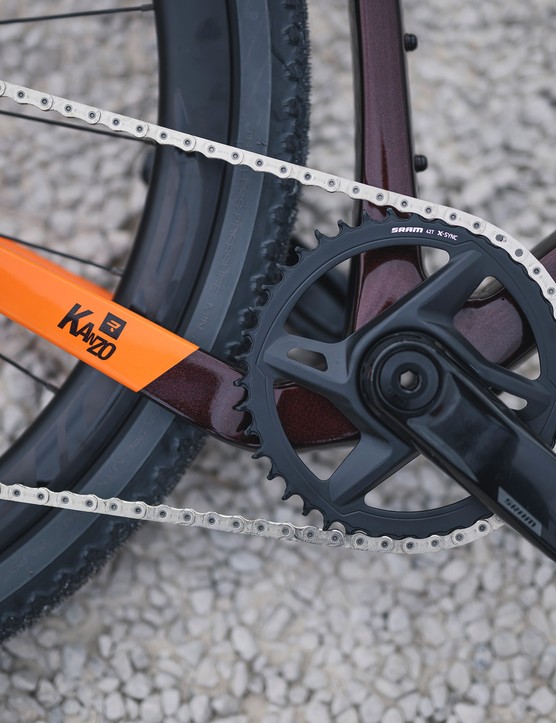Within this comprehensive guide, we will impart upon you a wealth of knowledge pertaining to cranksets. We shall delve into the various types of cranksets, chainring sizes, crank length, and crankset compatibility, while also dedicating attention to road, mountain bike, and gravel bike cranksets.
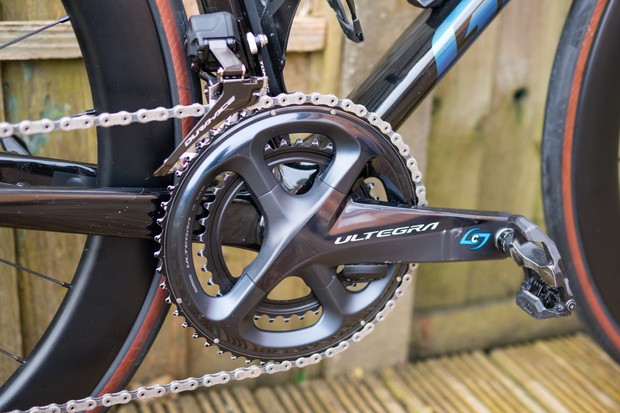
In essence, we shall unlock the enigmatic treasure trove that is the bicycle crankset.
Despite its seemingly simplistic nature, this component houses a myriad of complexity, silently enabling the motion of your bicycle wheels.
An Exploration of the Crankset
Countless forms encompass the world of cranksets, though their purpose remains steadfast. Simon von Bromley / Our Media Let us commence with the fundamentals.
The crankset, in its simplest form, represents the segment of the bicycle upon which one pedals, thereby propelling both the cyclist and the bike forward. In North America, it is commonly referred to as a crankset, while in the United Kingdom, it is often denoted as a chainset. Nonetheless, the terms crankset or even the abbreviated form ‘cranks’ are still widely employed.
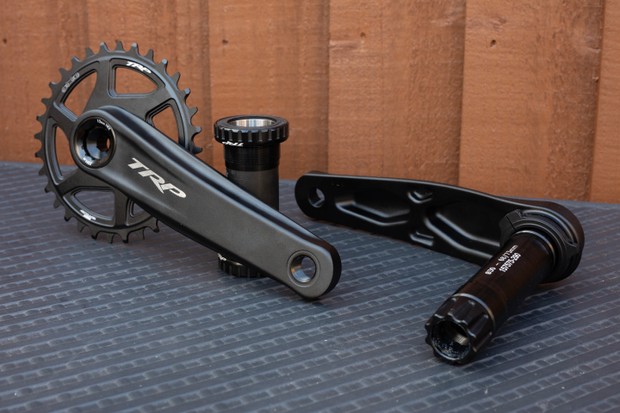
Constituting this vital component are the two crank arms, to which the pedals are firmly affixed, as well as one to three chainrings that serve as the pathway for the chain.
Cranksets typically consist of chainrings, crank arms, and spindles. Alex Law In contemporary designs, it typically incorporates the central section – the axle or spindle – that connects the two sides. Conversely, in traditional cranksets, the axle forms part of the bottom bracket, the assembly of bearings that secure the cranks to the frame of the bicycle.
The Importance of Rear Gearing
In conjunction with your rear gearing, which is typically controlled by a rear derailleur and a cassette featuring multiple sprockets, your crankset plays a vital role in offering you a diverse selection of gears suited for various terrains you may encounter during your rides.
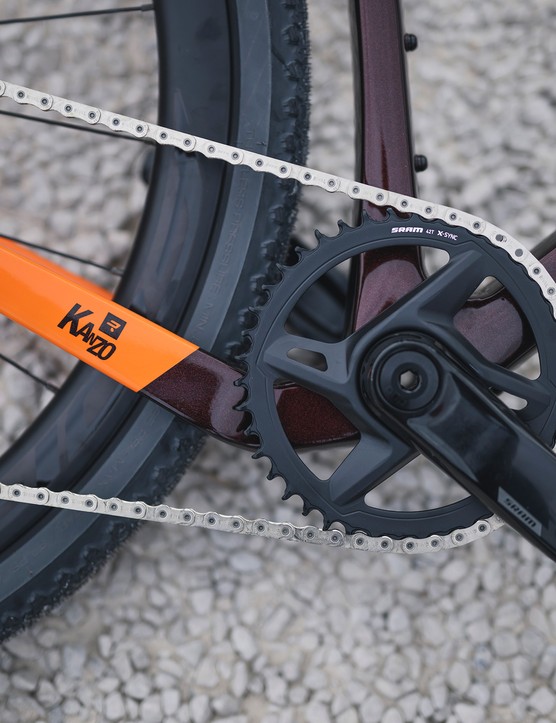
Unveiling the Complexity of Cranksets
Though it may appear straightforward, the crankset is actually a component of your bike that conceals its intricacy within a plethora of options, standards, and compatibility dilemmas.
Crankset Sizes Unveiled – 1x, Double, and Triple
Introducing the remarkable 1x (pronounced ‘one-by’) crankset, equipped with a single chainring, which eliminates the necessity for a front derailleur. Embracing simplicity whilst maintaining functionality, this innovation revolutionizes your biking experience.
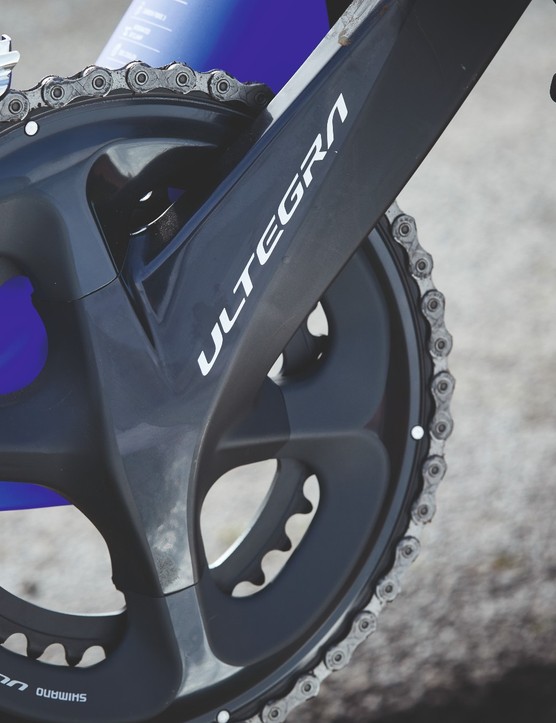
Embarking upon the realm of road bikes, you will frequently encounter the double crankset, featuring a pair of chainrings. Embraced by cycling enthusiasts worldwide, this versatile configuration caters to the needs of road cyclists, enhancing their performance on the asphalt.
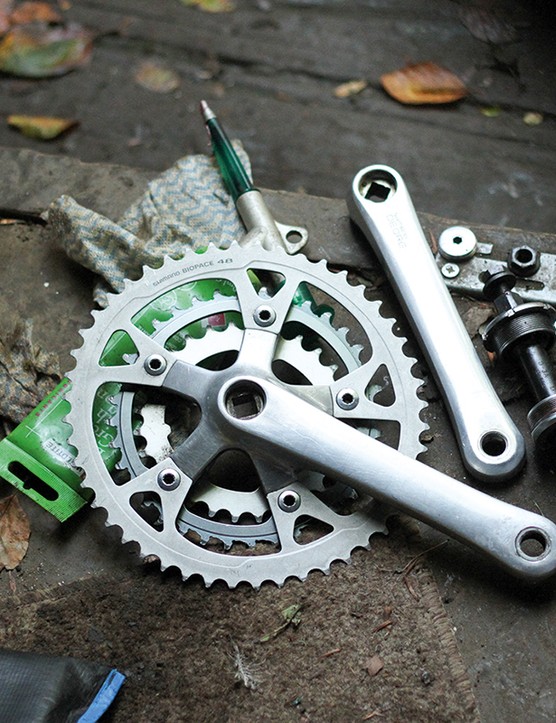
Discover the marvels of the triple crankset, boasting an ensemble of three chainrings. With its robust design and versatile nature, this remarkable innovation enhances your biking escapades, empowering you to conquer various challenges that come your way.
Introduction
Cranksets generally come equipped with one, two, or three chainrings, offering different options for cyclists.
Chainring Variations
Road bikes commonly feature dual chainrings, while the latest mountain bikes often come equipped with a single chainring. Both options offer suitable range for conquering hills and achieving faster rides.
Single-ring systems, known as 1x drivetrains, are gaining popularity not only among gravel bikes but also road bikes.
The Importance of Chainring Teeth
The number of teeth on the crankset’s chainrings, combined with the cassette, heavily influences your bike’s gearing. However, it’s important to note that chainring sizes vary significantly. Luckily, there is a wide range of options available to cater to different riding purposes.

Chainring Attachment
The chainrings are typically bolted onto arms that extend from the right-hand crank arm, also referred to as a spider. While this is the usual setup, there are exceptions that we will discuss later.
Swapping Chainring Sizes
Swapping chainring sizes on a double or triple crankset is not as straightforward as it may seem. Specific chainrings are designed to work together, incorporating tooth positioning and ramps to ensure smooth shifting of the chain. Therefore, compatibility should be carefully considered before making any changes.
Considerations with Power Meters
Performance-oriented road cyclists, as well as some mountain bikers and gravel riders, often opt for power meters integrated into the crankset’s arms or spider. Pedal-based power meters are also popular. However, it’s crucial to note that power meters come in various models, which can be quite expensive and may require specialized tools for installation.
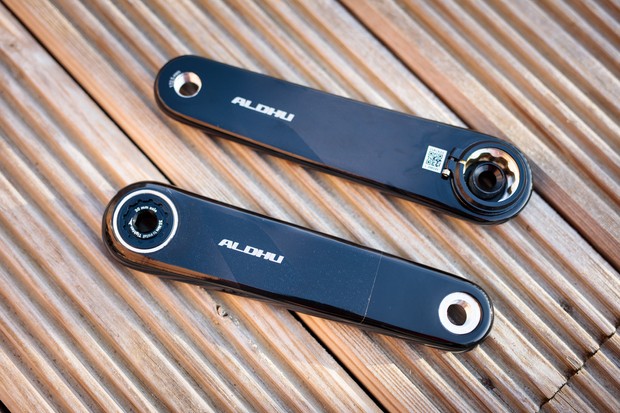
Swapping Chainring Sizes
Swapping chainring sizes provides cyclists with flexibility, but it’s important to consider compatibility. The specific design of the chainrings, including tooth positioning and ramps, ensures smooth shifting of the chain. Therefore, careful consideration must be given to maintain optimal functionality.
The Importance of Matching Rings
A mismatched pair of rings can lead to awkward shifting from the small to the large ring. This can result in a higher risk of the chain falling off completely, whether you’re shifting up or down. It’s crucial to ensure that your chainrings are compatible to prevent this issue.
Groupset brands also recommend a specific maximum difference in the number of chainring teeth that a front derailleur can handle. This means that you usually can’t increase the jump between rings beyond this limit.
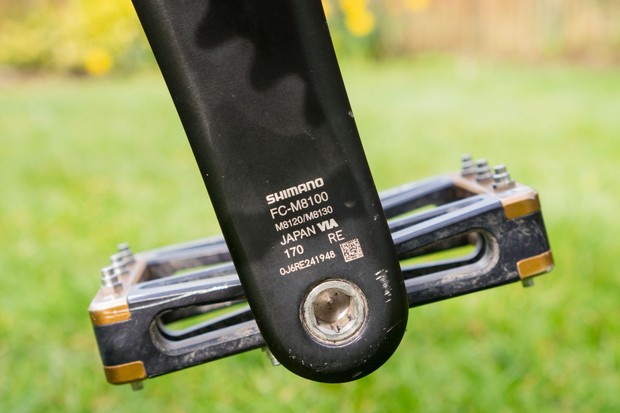
Furthermore, the size of the teeth on a chainring is tailored to the number of gears on your bike. For instance, using an 8-speed chainring with an 11-speed chain would make the teeth too wide, causing compatibility issues. Therefore, it’s important to choose chainring sizes that are suitable for your bike’s gear setup.
If you do consider swapping chainring sizes, make sure to check for compatibility before making any changes. This will help ensure smooth and efficient shifting.
Fortunately, if you have a single-ring setup, the process is much simpler. In this case, the main consideration is adjusting the chain length appropriately.
The Impact of Crank Lengths
Crank arms come in various lengths, which can have an impact on your cycling experience. The shortest commonly available crank length is usually 165mm, with incremental increases of 2.5mm up to 175mm. However, there are exceptions that offer longer lengths.
On mid-sized road bikes, the most commonly used crank length is 172.5mm. Mountain bikes, on the other hand, often feature crank lengths of either 170mm or 175mm.
Opting for longer crank arms provides you with more leverage, which can be advantageous, especially on larger-sized bikes. However, when fitting a longer crank to a bike, be cautious as it may reduce your ground clearance during fast cornering or when maneuvering over off-road obstacles.

Conversely, a shorter crank arm allows for maintaining a higher cadence, making it a preferred choice among triathletes.
Investing time in selecting the appropriate crank length for your cycling needs can significantly enhance your overall riding experience.
In practicality, we are only discussing a few millimetres of differentiation between ‘long’ and ‘short’ cranks – most riders will hardly perceive the distinction in regular cycling, going from one size to the next.
Compatibility of Cranksets
You have the ability to substitute the chainrings on your crankset, but not all chainrings will be compatible with all cranks.
Initially, different cranksets may consist of a distinct number of arms or direct-mount interfaces (linking the cranks to the chainrings), and they may be positioned in various ways.
Numerous of Shimano’s road cranksets possess four arms, however, they are not evenly distributed around the spindle.
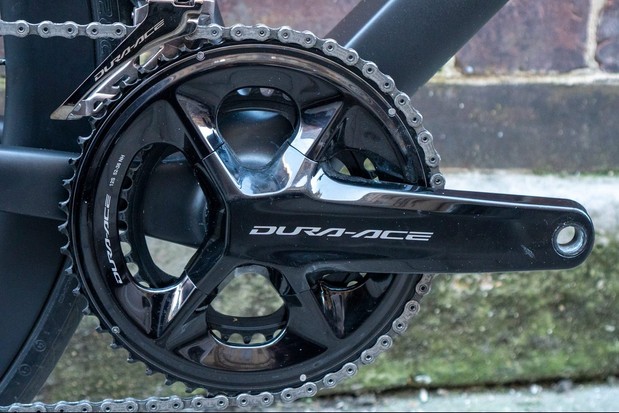
In contrast, SRAM’s 11-speed road bike cranksets feature five evenly distributed arms, with one chainring bolt fastened into the rear side of the crank arm.
Campagnolo road bike cranksets such as Super Record Wireless come with four evenly distributed arms, as do FSA’s.
Explanation of Bolt Circle Diameter (BCD)
BCD (bolt circle diameter) refers to the diameter of the circle that intersects the center of the chainring bolts. Ben Delaney / Our MediaWith conventional cranksets, the chainrings are attached to the spider arms on the right-hand crank.
The bolts create a circle around the spider, and the distance across that circle at the midpoint of the bolts is known as the ‘bolt circle diameter’ or BCD (referred to as the ‘pitch circle diameter’ or PCD in Shimano’s literature).
A replacement chainring must possess the same BCD as the crankset, along with the same positioning of the bolts, in order for them to align correctly.
The BCD of a particular crankset also establishes the lower limit of teeth compatibility for chainrings.
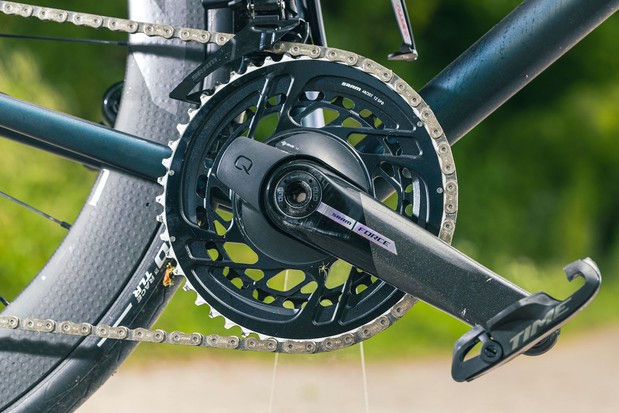
For instance, if you have a 130mm BCD crankset, the smallest compatible chainring would be a 38t. On a 110mm BCD crankset, the lower limit decreases to 33t, and so on.
In certain older systems, the BCD varied between chainring sizes, meaning a Shimano 53/39t road crankset had a different BCD (130mm) than a 50/34t (110mm), necessitating the replacement of the entire crankset when swapping between them.
All About Shimano Road Cranksets
Shimano road cranksets have undergone a significant change. In the past, changing chainring sizes meant swapping out the entire crankset. However, the latest Shimano road cranksets now feature a 110mm BCD (Bolt Circle Diameter) for all chainring sizes. This means you have the flexibility to modify your chainring sizes without having to replace the cranks themselves.
SRAM’s Diverse Crankset BCDs
On the other hand, SRAM’s cranksets have varying BCDs depending on the setup. For instance, both the 12-speed SRAM Force eTap AXS and SRAM Rival eTap AXS two-ring cranksets, as well as the single-ring crankset, have a 107mm BCD. However, the SRAM Force Wide double crankset has a 94mm BCD.
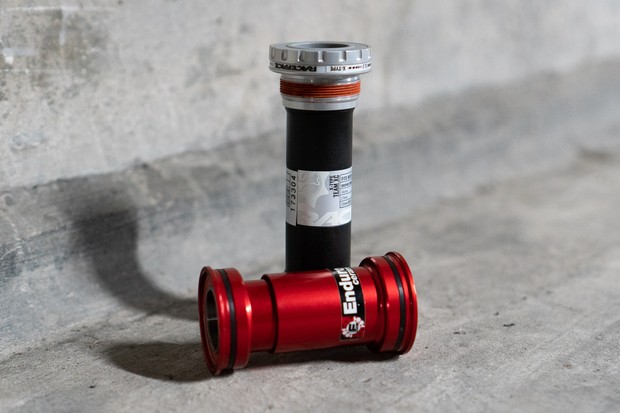
When it comes to 11-speed SRAM Force cranksets, their BCD ranges from 110mm to 130mm, depending on chainring compatibility. Additionally, SRAM’s non-direct mount S-650 Eagle MTB crankset has a unique BCD of 104mm, limiting interchangeability between SRAM chainrings.
In certain setups, the BCD arrangement becomes even more intricate. The inner chainring may be attached to the inside of the outer ring or separately onto the crank spider. This setup requires a different BCD for the inner ring, which differs from the outer ring’s BCD. The Shimano GRX gravel groupset, for instance, features an outer ring with a 110mm BCD and an inner ring with an 80mm BCD.
Direct-Mount Cranksets for Weight Savings
A noteworthy development in cranksets is the emergence of “direct-mount” options. These cranksets allow the outer chainring to connect directly to the crankset spindle, eliminating the bolts in the arms. This design not only streamlines the crankset but also reduces weight.
As technology progresses, understanding the BCD specifications and exploring different crankset options becomes essential for cyclists seeking optimal performance and versatility.
This system on single-ring mountain and gravel cranksets
This particular system is commonly found on single-ring mountain and gravel cranksets. It’s important to note that there is limited compatibility between different brands’ systems, so it may not be possible to mix and match components from different brands.
Some SRAM cranksets, such as the Force AXS and Red eTap AXS, employ direct-mount systems. These direct-mount systems have two chainrings that are CNC machined from a single piece of aluminium. According to SRAM, this design improves shifting and chain management due to the stiffer chainring. However, it also means that if one chainring wears out, the entire set needs to be replaced.
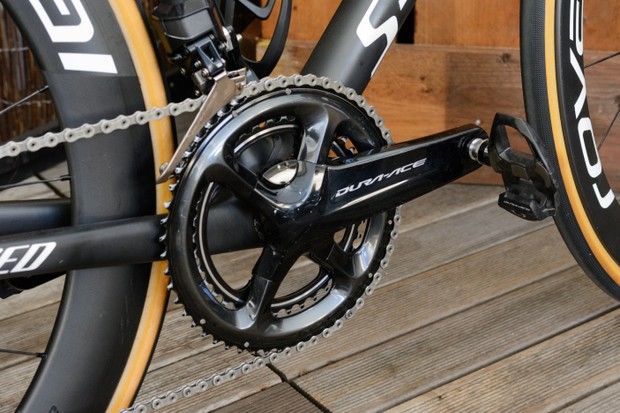

Cannondale’s SpiderRings have a similar design, but the chainrings are forged rather than machined.
Exploring bottom bracket standards
Bottom bracket standards are a crucial aspect to consider when it comes to cranksets. There are numerous different bottom bracket standards available, each with its own set of specifications. These standards dictate the distance between the bearings in the bottom bracket shell, how they are secured in the bike frame, and the diameter of the crankset’s spindle.
It’s worth noting that a road crankset typically won’t fit in an MTB bottom bracket, and vice versa. However, there are exceptions to this rule. Additionally, the complexity increases even further as there are different standards within both mountain bike groupsets and road groupsets. While some standards are inter-compatible, the majority are not. If you do encounter incompatibility issues, there are adaptors available for certain combinations.
If you’re seeking to exchange your crankset, it’s advisable to establish the prevailing standard employed in your bicycle and adhere to it, or consult with a professional at a bicycle workshop.
The breadth of your bottom bracket shell is the primary factor in determining the stance width or ‘Q-factor’. This refers to the distance between your pedals and plays a role in the efficiency of pedaling.

In general, road cranksets have a narrower Q-factor in comparison to mountain bikes, as the latter are designed to accommodate larger tire clearances. However, the emergence of gravel bikes and the increasing popularity of wider tires on road bikes have created some ambiguity in this regard.
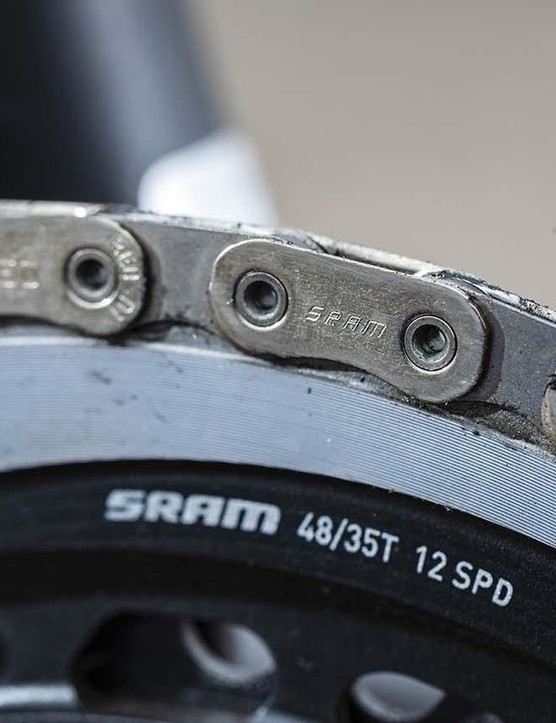
Types of Cranksets: Road vs MTB vs Gravel
Crankset designs differ depending on the specific type of riding they are intended for. Here’s a brief overview of common road, mountain bike, and gravel cranksets.
Road Bike Cranksets
Campagnolo Super Record Wireless only offers a double crankset option. Oscar Huckle / Our MediaThe majority of road bikes are equipped with a two-ring double crankset and, until recently, there were three typical configurations.

‘Standard’ Double Crankset
A chainset with a 53/39t setup has traditionally been regarded as the ‘standard’ double crankset, though this perception is starting to shift. Jack Luke / Our MediaA ‘standard’ double crankset consists of chainrings with 53 and 39 teeth. Despite its name, this configuration is not very commonplace nowadays, and is primarily favored by racers, as the current trend leans towards smaller chainrings, providing lower gear ratios.
Changes in Gearing on WorldTour Bikes
What’s even more interesting is that the most recent WorldTour bikes, equipped with SRAM or Shimano groupsets, no longer feature the usual standard double crankset due to the transition to 12-speed gearing.
Shimano has responded to this shift by introducing a 54/40t double crankset for their Shimano Dura-Ace Di2 R9200 groupset, which replaces the traditional 53/39t configuration. On the other hand, SRAM has taken a different approach. Their road bike groupsets now utilize a 10-tooth smallest cog on their cassettes, resulting in a broader gear range compared to Shimano’s 11-tooth small cog. This allows SRAM to incorporate smaller chainrings while maintaining the same overall gear ratios. For instance, the largest double crankset size on their Red eTap AXS groupset is 50/37t.

Introducing the ‘Semi-Compact’ Double Crankset
To strike a balance between a standard double and compact crankset, a 52/36t chainring combination has emerged. This provides an excellent middle-ground option. In fact, SRAM offers a 48/35t crankset as their equivalent alternative to the 52/36t size.
Apart from professional-level bikes, it is worth noting that many sporty road bikes now come equipped with a 52/36t crankset. This change signifies a notable trend in the industry.

Understanding Different Cranksets
It is known as a ‘semi-compact’ crankset, which offers slightly lower top-end gears compared to a 53/39 crankset. However, it provides more options for tackling hills with its expanded low-range capabilities. SRAM’s 12-speed equivalent to a semi-compact is a 48/35t combination.
The Benefits of a Compact Double Crankset
One option to consider is the compact double crankset. This type of crankset is commonly found on endurance road bikes, as well as all-rounders and entry-level bikes. Typically equipped with 50- and 34-tooth chainrings, SRAM’s 12-speed equivalent comes in a 46/33t combination.

A compact crankset ensures ample low-end gearing, especially when paired with a modern cassette that features a large sprocket with 30 teeth or more. It allows for a wider range of climbing options, while also providing a lower highest gear.
Exploring 1x Cranksets
While 1x drivetrains have yet to fully dominate road cycling, they are gaining popularity in the pro peloton. Riders like Primož Roglič have been using SRAM’s 1x Red AXS XPLR gravel groupset in the challenging mountains of the 2023 Giro D’Italia. These cranksets, commonly seen in gravel bikes, are also compatible with road bikes.
One-time groupsets are generally lighter compared to two-time cranksets and they can also be more efficient due to an improved chainline.
Time trial bikes have utilized one-time cranksets for a considerable time, benefiting from these perceived advantages.
Triple cranksets
Shimano’s highest-level groupset that includes a triple is Tiagra. Shimano. While some touring bikes possess three rings, triples are scarce considering the wide array of gear options now available through modern double cranksets.
Gravel bike cranksets – 1x or 2x?
One-time drivetrains are favored in gravel riding. Matthew Loveridge / Immediate MediaGravel bike gearing significantly varies based on the bike’s intentions, offering a range of crankset configurations with both one-time and two-time setups.
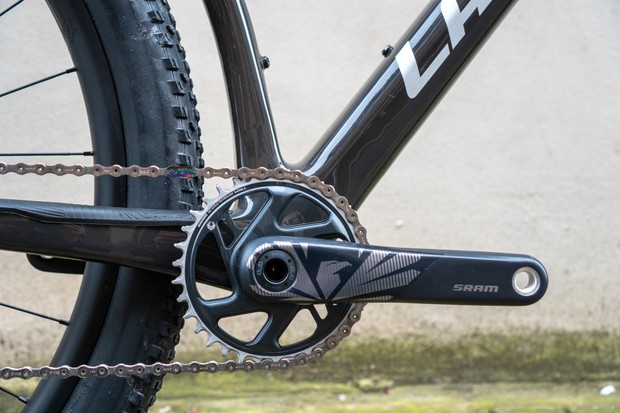
Gravel Groupsets
SRAM, Shimano, and Campagnolo have all recently introduced groupsets specifically designed for gravel biking – SRAM XPLR, Shimano GRX, and Campagnolo Ekar. These groupsets offer gravel-specific gearing and are available in both 1x and 2x configurations.
Compact Cranksets vs. Super-Compact Cranksets
In the early days of gravel biking, many bikes were equipped with compact road cranksets featuring 50/34t chainrings. Even today, you can still find some gravel or all-road bikes with this setup.
However, a compact crankset may not provide low enough gearing for off-road riding. To address this, super-compact cranksets, also known as sub-compact cranksets, have become increasingly common on gravel bikes with two chainrings.
These super-compact cranksets usually have chainrings with either 46/32t or 46/30t ratios, although Shimano GRX also offers a slightly larger 48/31t option.
The advantage of these super-compact cranksets is that they provide lower gear ratios, sometimes even below 1:1 with the appropriate cassette, allowing you to conquer more challenging off-road conditions or carry additional gear for your bikepacking adventures.
1x Cranksets for Simplicity
Another popular option for gravel bikes is the 1x crankset. By eliminating the front derailleur, the mechanical setup becomes simpler, and the larger gaps between gears are less of a concern during gravel riding. These 1x cranksets commonly feature single chainrings with 36t, 38t, 40t, or 42t.
Campagnolo Ekar, in particular, offers a single-ring setup with 13 speeds and a smallest sprocket on the cassette that has nine teeth. Their crankset options range from 38 to 44 teeth.
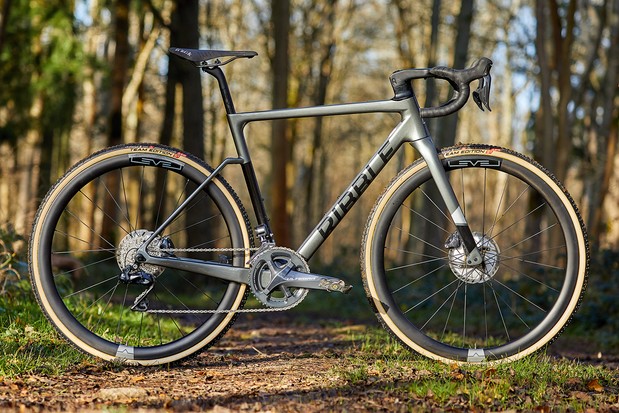
Mountain Bike Cranksets
Just like road and gravel bikes, mountain bikes also offer a wide variety of crankset options. Mountain bike chainrings typically have fewer teeth compared to road chainrings, as this provides lower gearing specifically suited for off-road riding.
So, whether you’re hitting the gravel paths or tearing through the mountains, there are crankset choices available to suit your needs and conquer any terrain.
All About Mountain Bike Cranksets
Nowadays, almost every new mountain bike is equipped with a single-ring crankset, except for the very entry-level models. The purpose of this design is to simplify the front-end drivetrain by using a cassette with a wide range of gears.
Shimano offers a range of 1×12 drivetrains, starting from the Deore level and going up to the top-of-the-line XTR groupset. However, there are rumors that this lineup will change with the introduction of Shimano Cues.
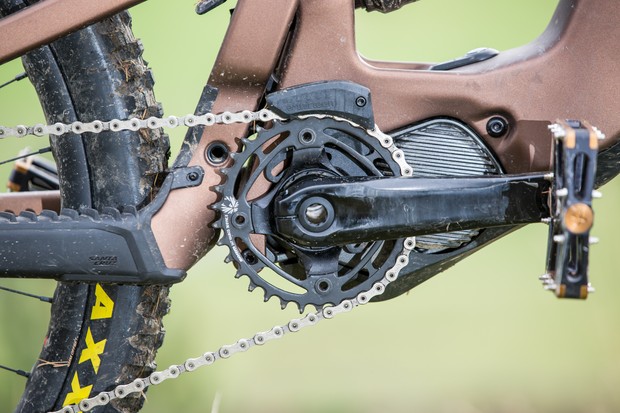
If you prefer a 2x setup, don’t worry. There are still plenty of options available across different Shimano groupsets, including some 11-speed models.
SRAM also focuses on single-ring setups for its mountain bike range, with the renowned XX T-Type Eagle Transmission being the flagship model. This 12-speed groupset offers various chainring sizes, with the top-end crankset providing options between 32 and 38 teeth.
For those who prefer a 2x option, SRAM offers the GX-1000 model, featuring a 36/22t or a 38/24t chainring configuration. There is also the budget-friendly S-200, which comes with a triple chainset of 42/32/22t and 9-speed gearing.
When it comes to chainline, different mountain bike brands use various axle-width standards. Therefore, it’s crucial to choose a crankset with the right chainline to ensure smooth performance throughout the gear range.
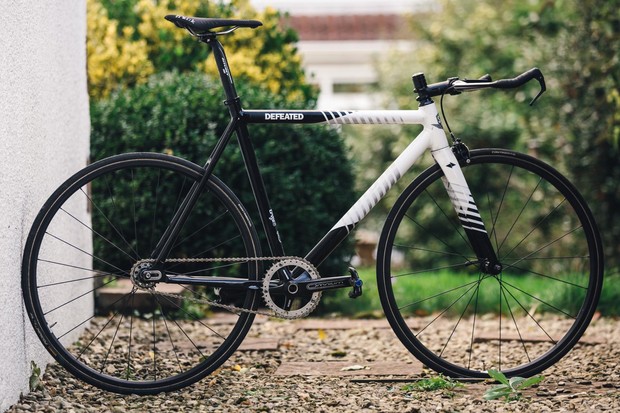
Cyclocross Cranksets
Cyclocross race bikes have also embraced the single-ring trend due to its benefits in challenging, muddy conditions. By reducing the risk of a dropped chain, a single chainring setup proves to be more reliable. However, you can still find cyclocross bikes equipped with the classic 46/36t two-ring groupset, offering smoother shifting with a smaller jump between chainrings.
Electric Bike Cranksets
Most electric bikes use shorter crank lengths to enhance strength. Hub drive motors are compatible with various cranksets, while mid-mounted motors require separate mounting standards for the cranks and chainring. Different motor brands like Bosch, Shimano, Yamaha, and Specialized have their unique mounting systems. Fortunately, aftermarket cranks are available to fit most electric bike motors, with some using the ISIS bottom bracket mount for easy compatibility.

Hybrids and Fixies
Hybrid bikes with flat handlebars come with different crankset configurations, including both 1x and 2x options. Singlespeed bikes, on the other hand, have a single chainring, and the key is finding the right combination of chainring size and rear sprocket to match your preferred gear ratio for various terrains.
Fixies and track bikes have a singlespeed drivetrain without a freewheel, meaning that the legs are constantly in motion whenever the rear wheel moves.
Exploring Alternatives
Elliptical Rings
In addition to standard round chainrings, elliptical rings are available for those seeking a different pedaling experience. While they were popular in the professional ranks a few years ago, their popularity has decreased. These rings aim to provide smoother pedaling by adjusting the effective gear ratio as the crank rotates, making it easier to pedal through the dead spots at the top and bottom of the pedal stroke.
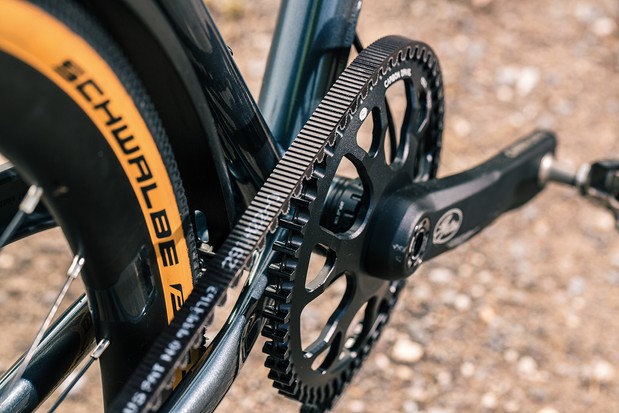
Belt Drives
Some city bikes utilize a belt drive system instead of a traditional toothed crankset. These bikes feature a carbon fiber toothed belt that drives the rear wheel, offering a low-maintenance and lubricant-free operation. Gates is a common brand offering belt drives.
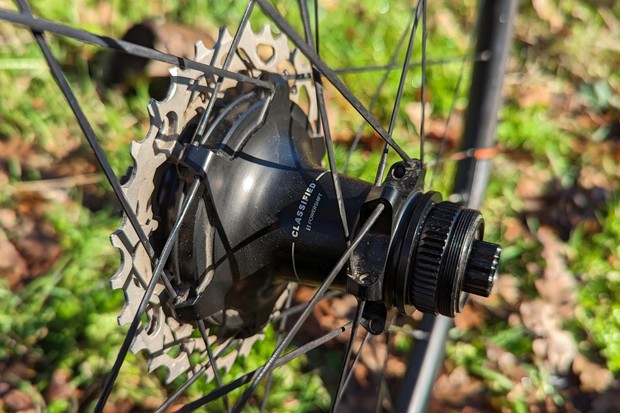
Classified Hubs
Classified’s Powershift hub is an innovative two-speed internal gear hub located in the rear hub. This system allows for a 1x groupset to achieve the same gear range as a 2x crankset. It is compatible with road, gravel, and mountain bikes, and claims to offer the largest gear range on the market.
Buying a New Crankset or Parts
Replacing a crankset or its parts can be a complex process with various factors to consider. In general, it is recommended to stick with the brand and model of the existing crankset to ensure compatibility. If you are considering a change, consulting a bike mechanic and using specialized tools may be necessary. It’s always best to rely on the expertise of professionals when it comes to these intricate components.


